Fairy-tale Prague
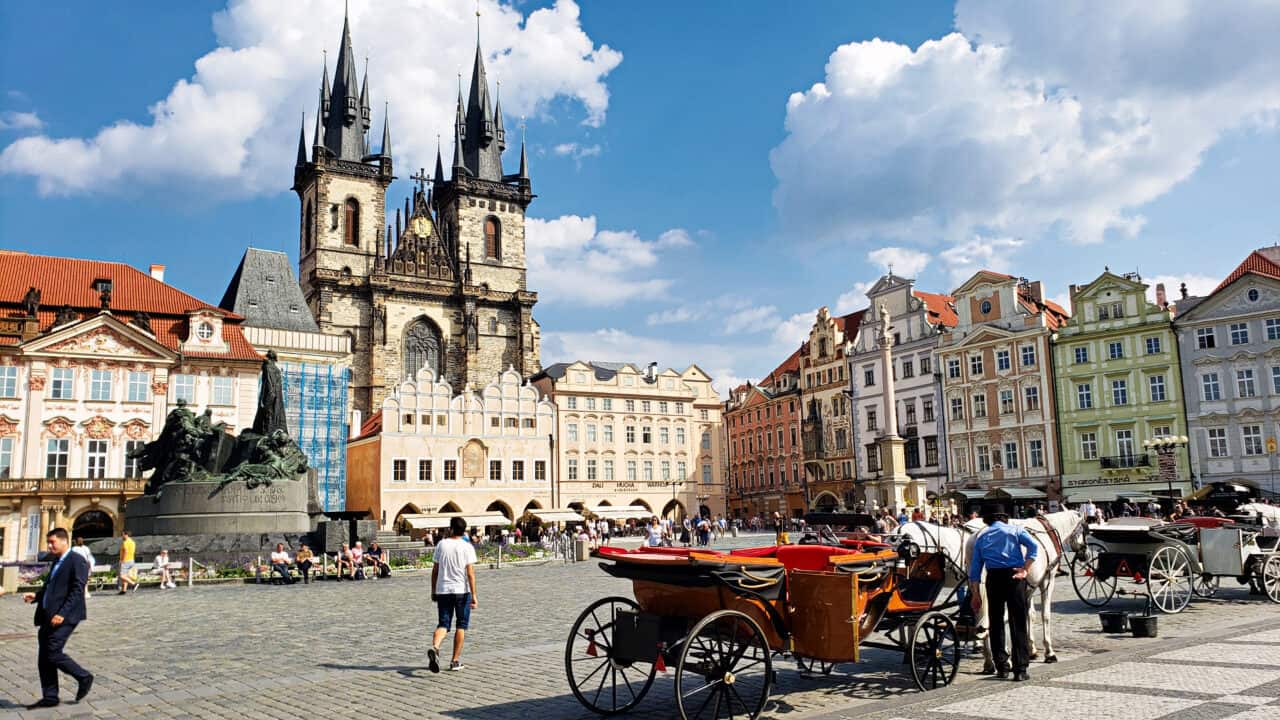
Magical, fairy-tale, lovely Prague. In 2003 Mike and I rented a camper and toured Central Europe. At that time, Mike decided that his favourite city was Vienna (which is gorgeous), while mine was Prague. In the last few years we have crossed Vienna three times spending 30 days in and around the city. This was our first time in Prague on this trip and we stayed for two weeks. I absolutely adore the architecture you see in so many places in Vienna. It is a beautiful city but somehow a little more formal than Prague. Prague has great buildings as well but it seems smaller and easier to wander around. I read that young Europeans are much more likely to come to Prague for a weekend than Vienna because it is more bohemian and vibrant. You will find a lot of university students wandering the streets in Prague. The University of Prague or The Charles University as it is known, was founded in 1348. It is one of the oldest universities in Europe.
UNESCO states “The Historic Centre of Prague is of high authenticity. It represents an organic urban development over more than a thousand years.”. That is a very boring way of saying that ten different centuries worth of buildings, monuments, sculptures and parks help create a magical atmosphere. Much of Prague was built between the 11th and 18th centuries.
Tourists on a tight timeline usually go to the Old Town on the east side of the Vlatava River which flows through the centre of Prague. On the west side of the river is “the Lesser Town” and above that is the castle overlooking the city. Mike and I hadn’t made it to the castle complex on our previous visit and it really is a “must see”. The castle is the official residence of the president of the Czech Republic which makes the level of tourism inside the complex somewhat surprising. Apparently the president’s living quarters in the castle are small and not particularly comfortable. A few of the recent previous presidents have actually chosen to live elsewhere. According to the Guinness book of records “The largest ancient castle in the world is Hradcany Castle or Prague Castle in the Czech Republic, built in the 9th century”.
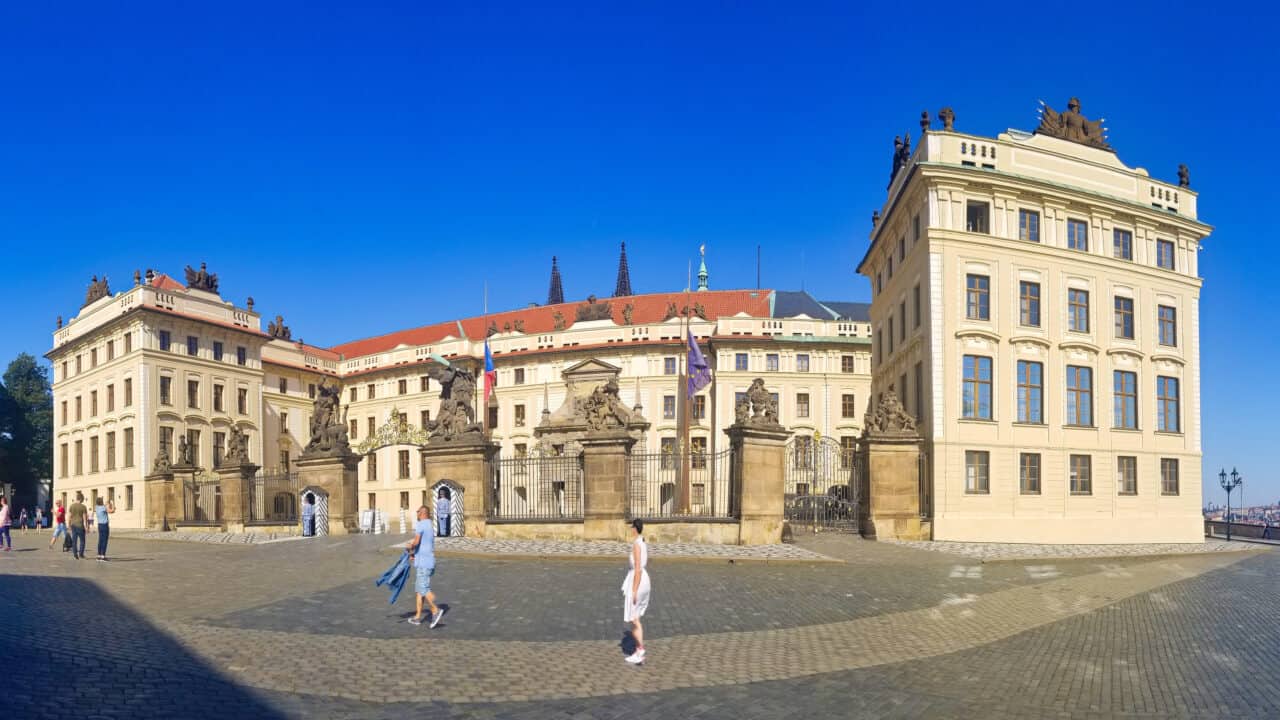
Prague is often referred to as “The golden city of one hundred spires” but sometimes you will see “the golden city of one thousand spires” which is more accurate. Prague is very well know for its cathedrals and the spires above them. The Golden City name comes from the stone used in much of the construction that shimmers like gold in the sunshine.
The Old Town Square has been the city’s main marketplace since the eleventh century. The Old Town City Hall is on the square and Prague’s Astronomical Clock is on one of its walls. When you read about Prague you read about the throngs of people that gather around this clock just before the hour strikes to see its movements. Although we thought that Prague was relatively busy we never had problems getting close to anything. The clock might have had 20 or 30 people watching it on the hour, certainly not hundreds as the internet warns you about. We had no line-ups anywhere which was fantastic for us but not so great for the tourism industry. This doesn’t mean that Prague was deserted because it wasn’t, it just wasn’t overly crowded.
The photo at the top is of the Old Town Square. In the background you can see the Tyn Cathedral which, legend has it, inspired Walt Disney’s Sleeping Beauty Castle. Tyn Cathedral apparently has a Gothic exterior and Baroque interior. Wouldn’t it be nice if I knew this automatically instead of having to read it on the internet! As you can see in the photo, Prague still has a few horse and buggies. They also have a lot of “vintage cars” which Mike informs me are really very modern replicas. You can go for a Vintage Car Tour in Prague with a commentary from the driver. This seems to me to be a great replacement for the cities around the world that have stopped their horse and buggy tours.
Crossing the river from the Old Town to the Lesser Town and Prague Castle is the Gothic Charles Bridge built in the 14th century. About 30 statues line the bridge. It is an extremely well-known and beautiful landmark with medieval towers at both ends. On the bridge you will see a lot of tourists admiring the statues and taking pictures over the river of both sides of Prague.
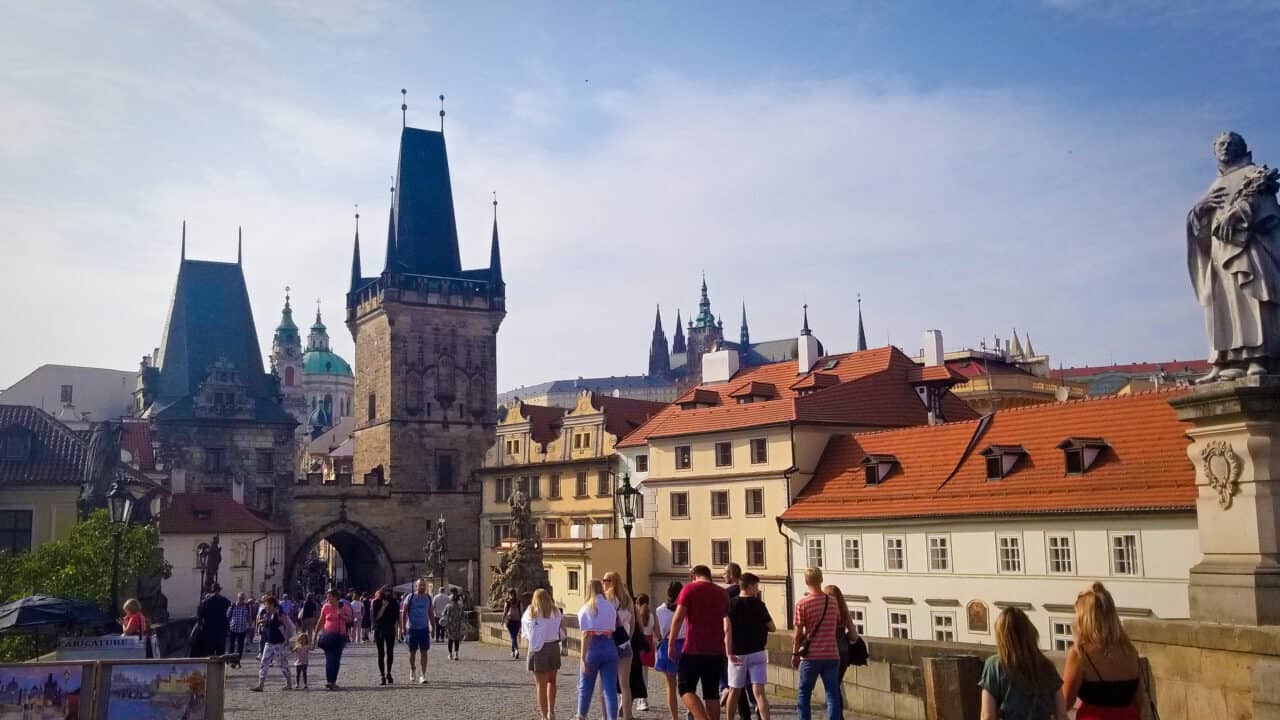
All the historic areas in Prague appear to have cobblestone streets and Mike’s and my eyeballs wouldn’t stop rattling every time we rode around the city. At one point, Mike kept asking me to check something on a map which was on my phone, mounted on my bicycle handlebars. I could hardly see the phone for the vibrations, never mind details on a map!
Visiting the Castle complex is a day trip on its own. It has the prerequisite gorgeous cathedral. Mike and I both loved the Gothic splendour of St. Vitus Cathedral. Some of the great buildings on the castle grounds are now museums, national art galleries and government offices. There are two guards on display at each entrance to the complex and more that aren’t quite so obvious. They have a changing of the guards ever hour. There is no charge to get into the castle grounds but you have to go through a metal detector and have your bags checked. There is a small fee if you want to tour inside some of the buildings. The cathedral is free to walk into and around the main nave but if you want to see some of the smaller well-known chapels in the cathedral or the crown jewels and the Crown of Saint Wenceslas you have to pay a small fee. Apparently, people usually have to line-up to get into places like the cathedral but Mike and I had no problems getting in and no crowding inside. The first time I visited St. Peter’s Cathedral in Rome, I hated all the tour groups and crowds of people. Seeing places with some people but without crowds is lovely. Some of the major tourist cities in Europe have got together to investigate how to cut down on the tourists who visit them for one or two days and encourage the longer staying visitors who, the plan is, will spend more money. The desire is, to keep the revenue and yet cut down on the overcrowding.
Near the Prague Castle complex is the stunning Strahov Monastery and Library. Strahov Monastery is considered to be the oldest in Prague dating back to the 12th century. In the 1600s the library contained more than 3,000 books. During the 30 years war the Swedes invaded Prague and were removing boxes of books from the library. The monks took the valuable books and gave them to the locals to store and hide. The townspeople returned them to the monastery at a safer time and they included some of their own books. In the end the monastery didn’t lose books, they actually gained some.
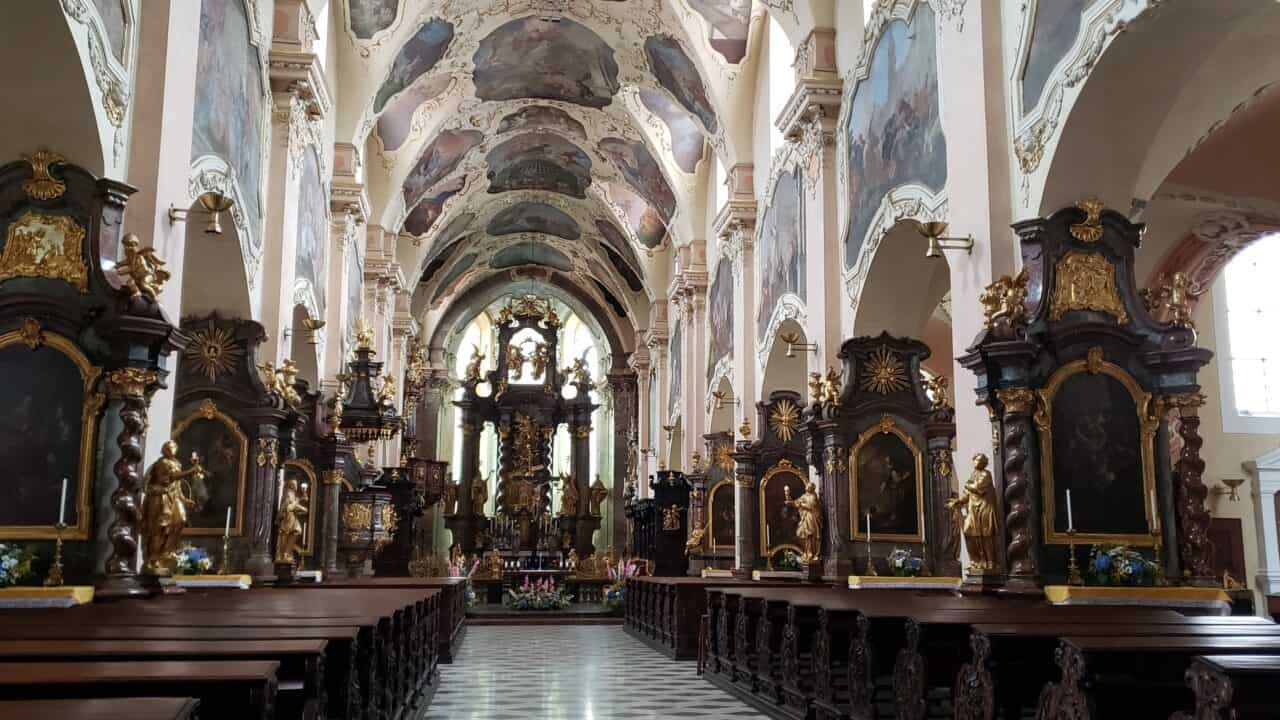
The most significant figure in Czech history is the 14th century King of Bohemia who became the Holy Roman Emperor Charles IV. Charles IV ruled his empire from Prague and greatly enhanced the city and increased its importance. He is known for founding the first university in Central Europe later named after him, The Charles University. Hradvany Castle (Prague Castle to tourists), St. Vitus Cathedral, Charles Bridge and numerous other churches and palaces were built in and around Prague during his reign. New Town or Nové Město is a bit of misnomer in that it was laid out by Charles IV in 1348. The heart of New Town is Wenceslas Square.
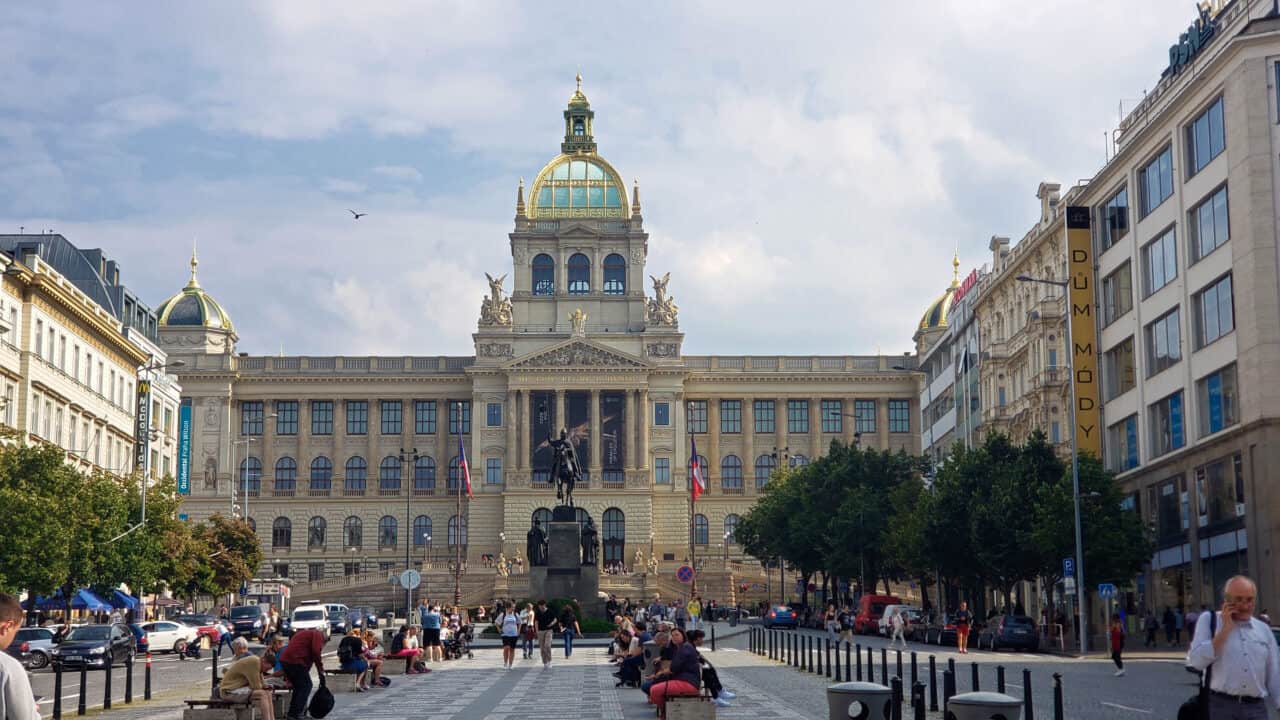
Mike and I continued our bike rides while we stayed in Prague extending our route from the city south. Our hope is that we might be able to connect our rides in Prague to our previous rides along the Danube at some point. What started out as a nice loop around Europe is becoming more like a tree with branches.
On a totally different vein, I want to tell you a little about the Czechs and their beer. Although there are a lot of wineries in Czechia which are very well respected, beer definitely appears to be the national drink! For those that don’t know me, I very much dislike beer but I can still be interested in the history and cross ocean arguments that are going on. Czechia, and Bohemia more specifically, has agricultural conditions that are excellent for growing hops which is the main ingredient in beer. Mike and I often see fields of hops on our bike rides. In the far past, hops were so important to Czechia that anyone caught exporting cuttings that could be grown elsewhere were executed. One microbrewery in Prague has been in business since 1499 and is still going strong.
The first Czech brewery was built in 1118. According to the internet the Czechs drink more beer per capita than anyone else, they founded the first Beer Museum in the world, they founded the first brewing textbook and they founded the first Pilsener and Budweiser (sorry Yanks).
In the early 16th century the main export from Bohemia was beer and much of that came from the town of České Budějovice (where we will be staying next) in south Bohemia. As Mike and I well know, the name of this town is very hard to pronounce so it was referred to as “Budweis,” which is still associated with great beer today. The word Pilsner is a derivative from the west Bohemian town of Plzen.
Today the American and Czech brewing companies are entangled in a trademark dispute in the right to use the name “Budweiser” and variations of it in Europe for their two very different beers. While the American company is by far the larger company, the Czech brewery still calls its beer, with some justification, “The Original Budweiser”.
Next article from the beer city of České Budějovice.
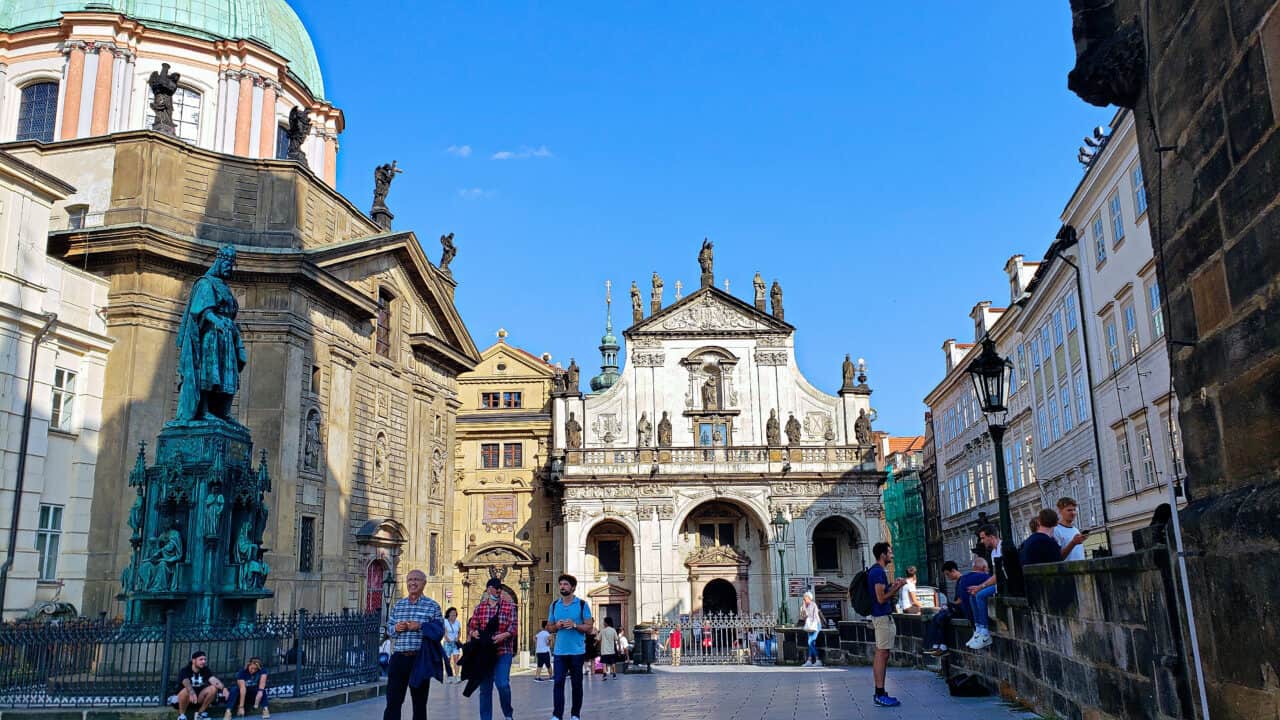
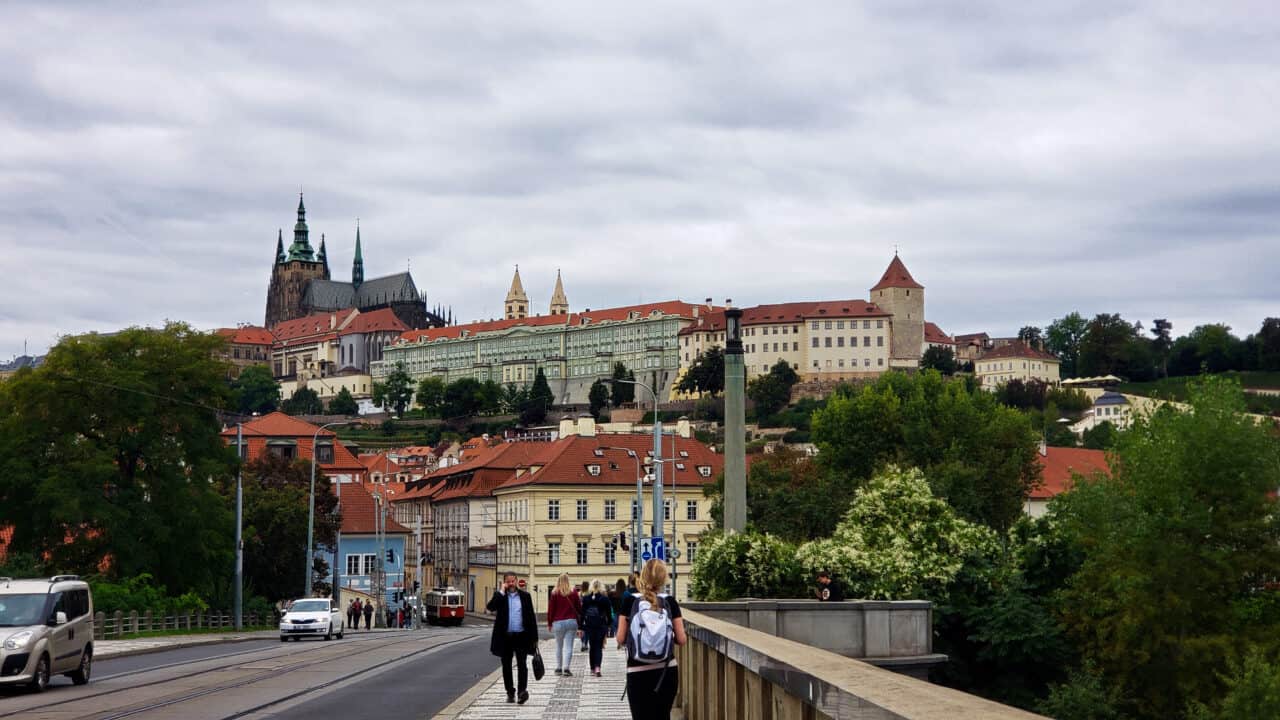

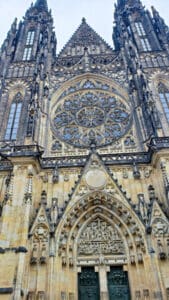
Leave a Reply